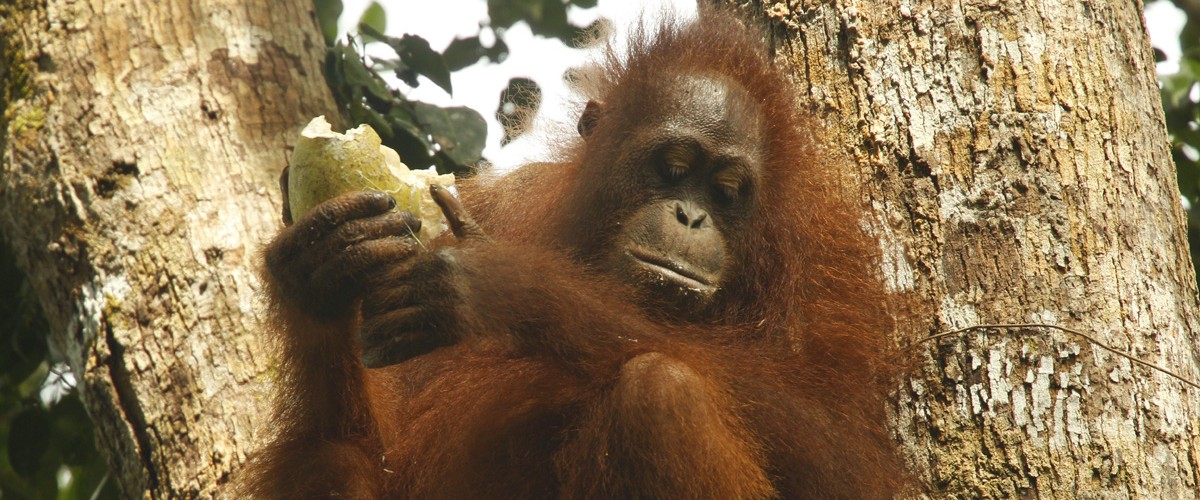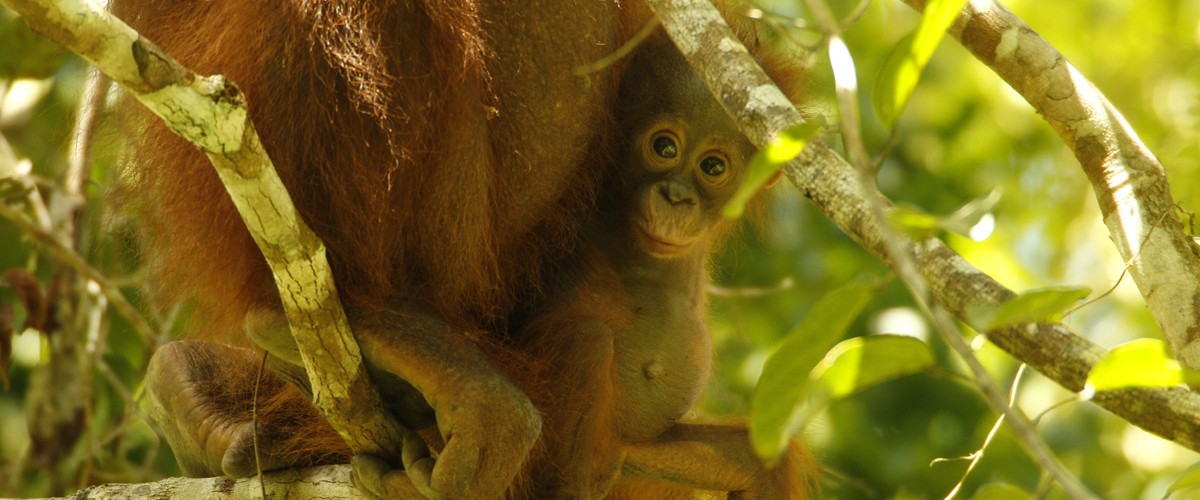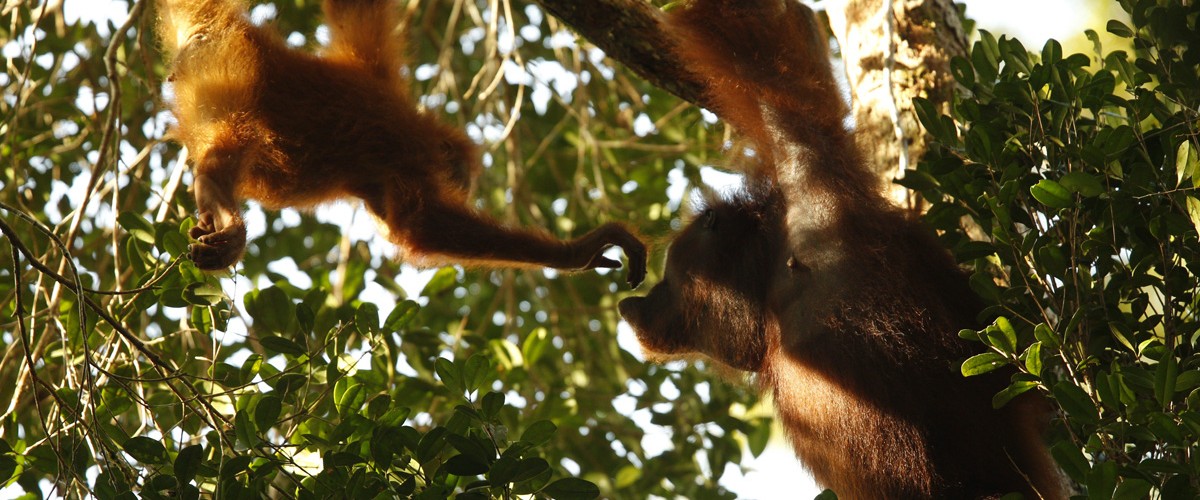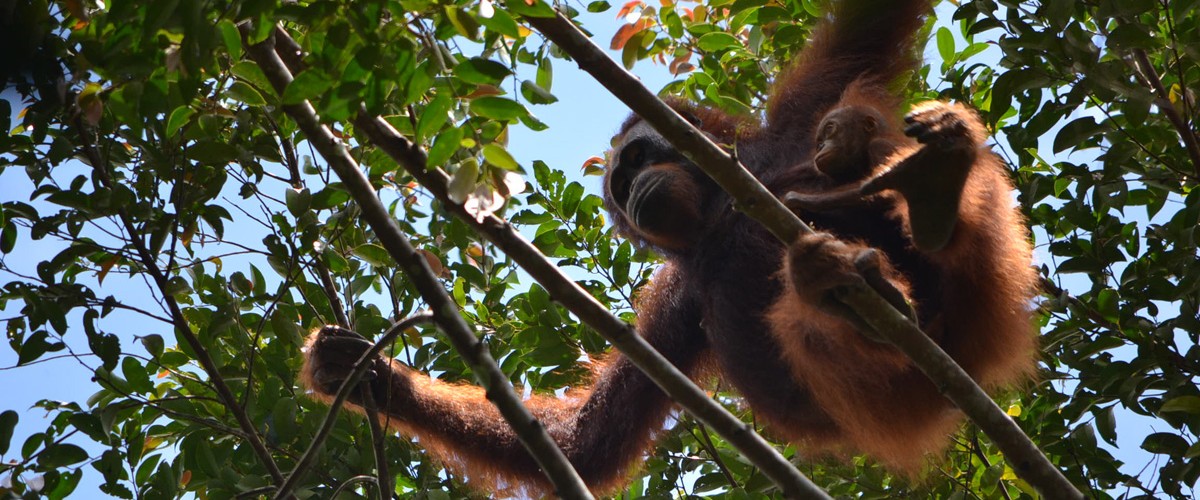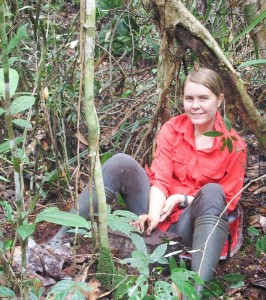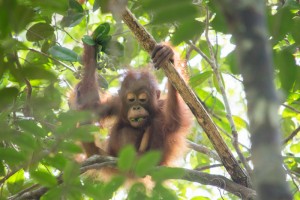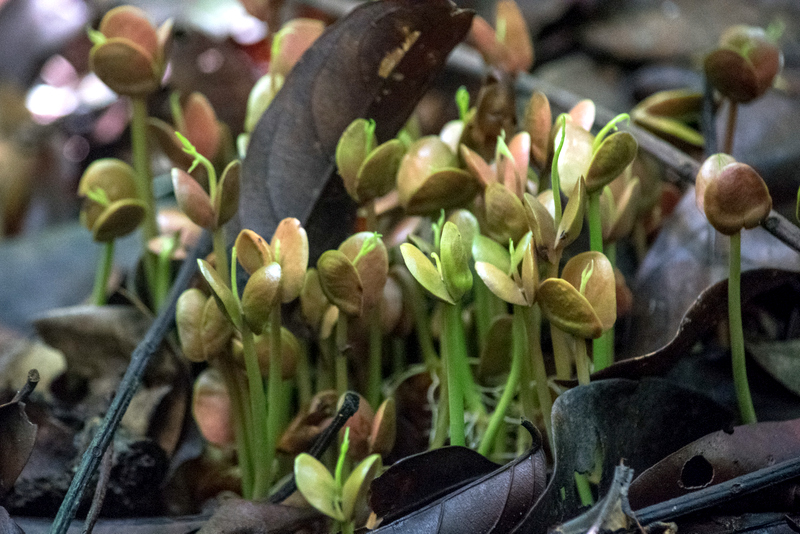By Andrea Blackburn, Boston University Ph.D. Student
After my first year at Boston University, I have just arrived in Indonesia for my first field season as a Ph.D. student, and I am excited to finally be returning to Borneo to follow orangutans! I previously worked as volunteer for nine months studying orangutans at the Tuanan Research Station in Central Kalimantan for Rutgers University. Now, as a graduate student, I am returning to Borneo to study seed dispersal, this time at the Cabang Panti Research Station in West Kalimantan. I’ve never been to this part of Kalimantan before, and I’m excited to finally see Gunung Palung National Park and its amazing biodiversity. After having just spent a year in classes reading about primates it will be great to finally be out in the forest again with some orangutans, and I’m really interested in comparing the Gunung Palung population with the orangutans I followed at Tuanan.
For my research project this summer I will be studying orangutan seed dispersal. Researching seed dispersal is important for our understanding of how orangutans influence forest structure. Researchers believe that orangutans play an important ecological role in the forest as the main seed dispersers for many tropical forest plants, especially the larger-seeded species that are not eaten by other primates or hornbills. Often when orangutans eat fruit, they swallow the fruit seeds whole and defecate the intact seeds later on, far away from the original fruit tree. These seeds may germinate and grow into seedlings and eventually trees. Where and how orangutans move, which seeds they disperse, the germination rates of defecated seeds, and gut passage rates are all parameters that I plan to study in order to better understand how orangutan-mediated seed dispersal shapes the rainforest.
- Andrea in the field at Tuanan Research Station, Central Kalimantan.
- Young orangutan, Joya, feeds on fruits in Tuanan Research Station. Orangutans are known as the gardeners of the forest because of their role as seed dispersers, so Andrea aims to investigate how orangutans influence the forest structure.
In order to answer my research questions, I plan to collect orangutan fecal samples and analyze the numbers and types of seeds they contain. This involves counting and identifying all of the seeds in each of the samples. I will then plant these seeds and measure how many seeds germinate and how long the germination process takes. I will also compare the defecated seeds to controls, or undigested seeds, collected directly from the trees and plants in the forest. I believe that the orangutan digestive system may be treating the seeds in such a way that it increases the chance of germination. Another question I will be researching this summer is orangutan gut passage rates. This means I am trying to understand how long it takes food to pass through an orangutan’s digestive tract. I can measure this by recording when an orangutan eats a fruit and then record when I see the fruit seeds in the feces. This is an important question to study as I expect there to be differences in gut passage rates between adults and juveniles. Differences in gut passage rates can relate to differences in an orangutan’s ability to digest nutrients, meaning that the amount of calories an orangutan can extract from its food may change as the animal ages.
I am excited to get back into the forest and apply the field skills and techniques that I learned during my time at Tuanan Research Station. As a research volunteer there, I assisted graduate student Shauhin Alavi with his work on orangutan cognitive foraging, meaning how orangutans know where to go to locate food in the rainforest. He was also interested in learning what aspects of their food and the forest they are remembering. Young orangutans learn all of these skills from their mothers, who have extensive mind maps of the forest that we humans have yet to understand. As part of Shauhin’s project we measured thousands of trees in large 50 x 50m plots, tagging them and recording their diameter, height, and fruiting state. My time at Cabang Panti this summer will hopefully allow me to build on this experience, and I am hoping to get new ideas and understand the feasibility for my own dissertation research. I am also looking forward to meeting the GP orangutans and my fellow researchers. Here’s to a productive summer!
